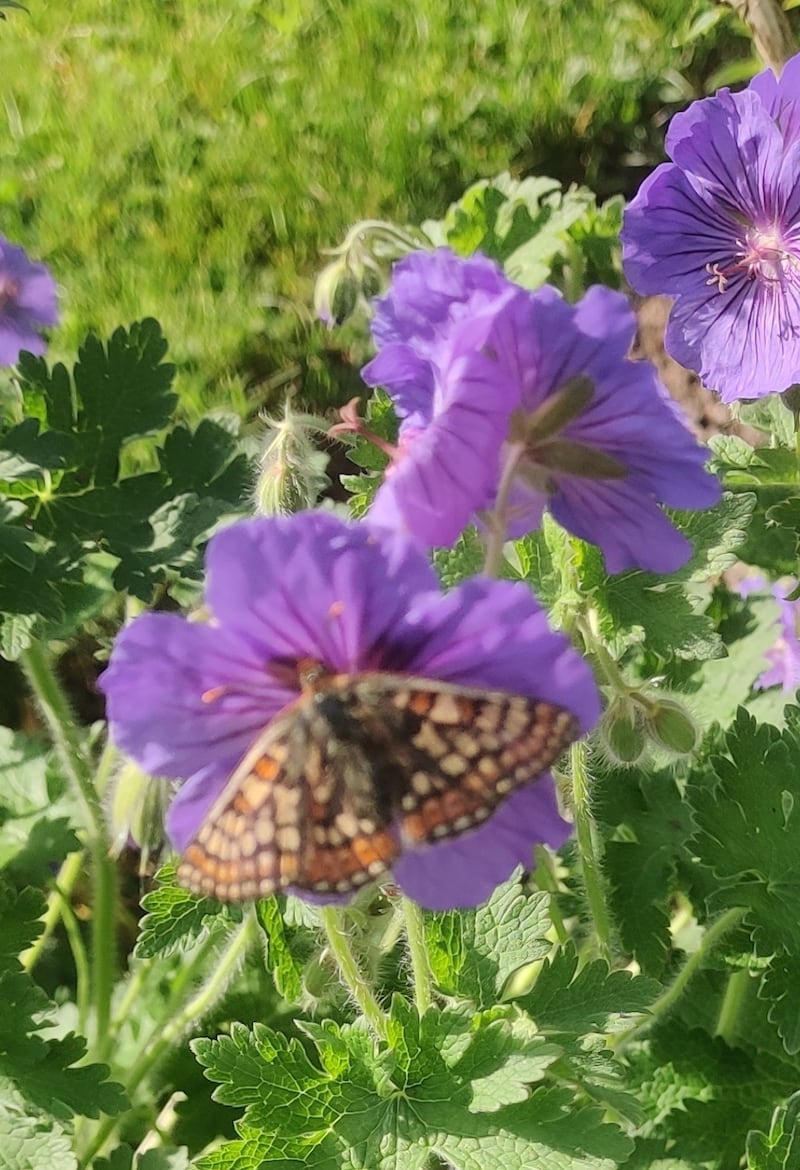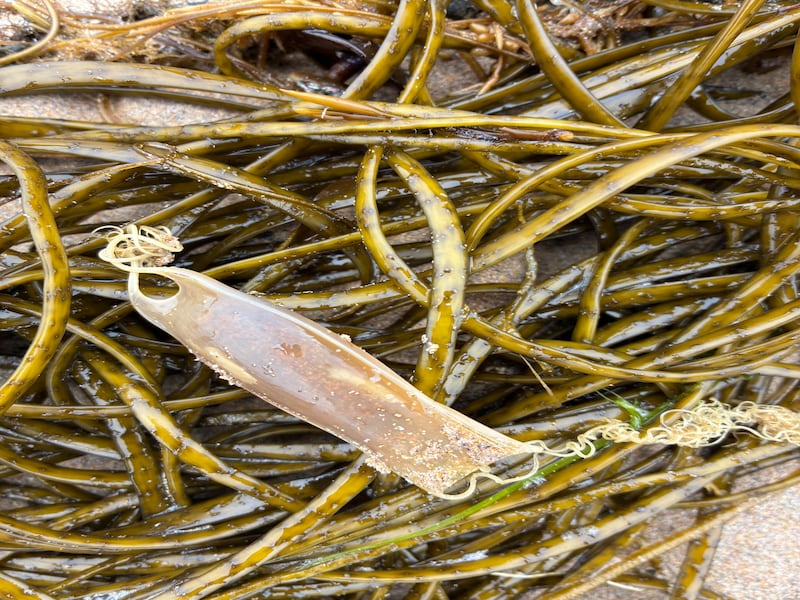Blue tits built their nest in my outdoor metal letter box in late April. It took three days’ hard work. Four of the subsequent six chicks survived and left the nest on June 4th. This is the fourth time my letter box has been commandeered by these little birds. Frank Russell, Co Clare
Now that the nest is no longer in use and contains neither eggs nor young, it is okay to photograph it. Blue tits can nest in a variety of habitats, from woodlands to gardens, in a suitable crevice or hollow in trees or walls. They regularly use nest boxes and obviously your letterbox fits the bill for your local birds. While their average lifespan is three years, the oldest known individual was nine years old, so maybe it’s the same pair back each year.
These growths are common on stone walls near Our Lady’s Island in south Co Wexford. What are they called? Larry Dunne, Wexford
This is navelwort (Umbilicus rupestris), which grows on stone walls and non-calcareous rocks. It is a native perennial and common except in the centre of Ireland. In his book Ireland’s Generous Nature, Pater Wyse Jackson says navelwort was formerly used medicinally for a variety of ailments, though in Co Clare it was reputed to only cure Protestants.
RM Block

I recently saw this butterfly on geranium in my garden. Could it possibly be a marsh fritillary? P Kelly, Dunmore, Co Kilkenny
It could indeed. Marsh fritillaries cannot be confused with any other Irish butterfly. Our Irish population is genetically unique within Europe. While adults will fly widely over an area, breeding is confined to grassland areas where the foodplant of the caterpillars (the devils-bit scabious) makes up at least a 25 per cent density of plants. Adults fly from mid-May onwards and will visit nectar-rich flowers for sustenance to give them strength and energy for the breeding process. They overwinter as caterpillars. It is listed for protection under the EU Habitats Directive 1992.

What species is this mermaid’s purse? It was found on Five Fingers beach near Malin Head in Co Donegal. Aoife Somerset (6)
Mermaid’s purse is the name given to the egg cases of skates and ground sharks, which contain the developing young. Those of the dogfish – which technically are described as ground sharks – have long curly tendrils at the four corners for wrapping around seaweed when they are laid. When ready, the young fish slips out through a slit in the side and the empty egg case is then washed up on the shore after stormy weather disentangles it from the seaweed. Those of the lesser-spotted dogfish are 5cm-7cm long; those of the large-spotted Dogfish are 8cm-10cm long. A measurement of the egg case would be needed to definitely know which one it is, but the lesser-spotted one is the more common.

This bat recently wandered into my bedroom. It fitted comfortably into an 8cm diameter glass and scared the wits out of my wife. Is it a pipistrelle? Ken Myler
I’d say it did, if she went to drink out of the glass and found the wandering bat comfortably ensconced inside. We have three species of pipistrelle bat, all of which have short, broad ears and a combined body and tail length of less than 8cm. It is impossible to identify from your picture taken from the back but if it has its summer maternity quarters in your house, it is most likely a pipistrelle. The common pipistrelle likes buildings of stone construction, while the soprano pipistrelle prefers buildings of brick construction.
Please submit your nature query, observation, or photo, with a location, via irishtimes.com/eyeonnature or by email to weekend@irishtimes.com













